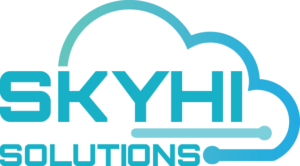Food safety involves everybody in the food chain.
Food safety has become a top priority for everyone involved in the food chain from farm to fork.
SKYHI-FSMS helps your business meet your customer, compliance and regulatory requirements based on the latest food safety standards. Our solution equips your business to control food safety hazards, reduce wastage and food recalls, improve the reputation of your business and gain increased market share.
Our cloud based solution integrates processes for planning, risk assessment, resource management, HACCP, Pre-requisite programs, audit and document management for continual improvement.

Benefits of implementing FSMS in your organisation
Ingredients of our Food Safety Management System

HACCP
Manage HACCP plans for each product group, manufacturing process and product formulation. Identify hazards in processes, ingredients, raw materials and packaging. Establish control measures and procedures to reduce or eliminate the hazards at critical control points (CCP) in the manufacturing process.

Pre-Requisite Program
Manage the oversight and day-to-day operations for better food safety in your manufacturing facility. Our PRP software manages raw material receival, pest control, cleaning and sanitation, Good manufacturing practices (GMP), staff training, recalls, personal hygiene, allergen management, calibration, preventive maintenance, document and record control.

Traceability
Our traceability software helps you keep your products safe and nutritious by ensuring all participants in the supply chain have effective practices, procedures and records in place to allow rapid identification, location and product recall or withdrawal when problems are suspected or confirmed.

Planning Management
Determine internal & external factors, identify stakeholders, manage policies & objectives and plans to achieve them, delegate roles and responsibilities, implement processes.

Risk Management
Proactively identify risks, manage environmental aspects, create a risk & opportunity matrix, control risks & upload safety data sheets for hazardous substances.

Asset Management
Track all your business assets, create & maintain registers, record insurance /warranty. Schedule preventive maintenance and record corrective maintenance information.

Training Management
Manage & maintain employee/contractor induction,training, licenses, certifications and work history . Conduct a Gap analysis, create a training schedule and record course information

Compliance Management
Create an audit plan, inspection questionnaire, assign team member roles and responsibilities, maintain audit programs & results. Take corrective actions with list of non-conformances and alerts.

Document Management
Capture, search, manage, distribute and archive electronic documents. Integrate documents seamlessly with other applications for better collaboration and workflow.

Incident Management

Supplier Management

Bespoke Software
Be in control of how the software works for your business as it is tailored to your requirements. Increase productivity by automating mundane tasks and implement changes quickly as your business grows.


